The third feeding of peonies
The third feeding of peonies is carried out at the very beginning of flowering. Its goal is to prolong this important stage as much as possible, for the sake of which, in fact, flowers are grown. Plants practically do not need nitrogen during flowering, but peonies still need potassium and phosphorus. Feed the bushes during the flowering period with 10-15 g of potassium sulfate and 15-20 g of superphosphate, embedding them in the ground. Foliar dressing can also be done. For her, take a complete mineral fertilizer and spray the bushes with it according to the instructions.
Foliar top dressing is best done late at night or on a cloudy day. Otherwise, in those places where fertilizer gets on the leaves, burns may form.
Folk ways of feeding peonies
For a more lush flowering, boric acid and eggshells can be used as top dressing.
- Boric acid. Dissolve 5 g of boric acid in 1 liter of hot water. Bring the amount of solution to 10 liters. This dressing is carried out on the leaves just before flowering.
- Eggshell. There are many options for feeding from eggshells. We suggest the following: take 10 dried shells, grind them and pour 1 liter of warm water. After about 2 weeks, the infusion will begin to exude a not very pleasant smell - this is a sign that the dressing is ready. Dissolve it in a bucket of water and water the ground around the peony bushes before flowering.
Top dressing schemes depending on the season
Feeding schemes depending on the season and period:
- Active growth. The first top dressing of the year falls on this period, which comes with peonies in the spring. At this time, you will need to feed the plants with fertilizers containing nitrogen and phosphorus.
- Budding. This period occurs in peonies in mid-spring. For lush flowering, plants will need potash and phosphorus fertilizers.
- Top dressing of peonies after flowering. Plants fade in summer and require phosphorus-potassium fertilizers.
- Preparing for a rest period. At the beginning of autumn, you will need to apply mineral fertilizers, and at the end - organic fertilizers.
In the spring
Spring feeding is considered the most important for peonies, because at this time the bushes wake up after winter and they have buds. It is carried out in several stages.
The first top dressing should be applied in late April or early May, using mineral and organic fertilizers. For root feeding during this period, Kemira-Universal is suitable. The powder should be embedded in a pre-moistened soil.
Kemira-Universal is great for fertilizing peonies in the spring
For foliar feeding, you need to use urea (50 g per bucket of water). The solution will need to spray the aerial part of the bush. Foliar dressing can also be carried out using a growth stimulator (Siliplant). The solution is prepared from 2 ml of the product and 1 liter of water. The resulting mixture will need to be sprayed on the plants (1.5 liters of the product per 10 m2).
Siliplant Universal is suitable for spring foliar feeding of peonies
Complex fertilizer for abundant flowering of peonies, which will need to be scattered under the bushes and embedded in the ground, must be prepared from the following components:
- 10 g of ammonium nitrate;
- 10 g superphosphate;
- 5 g of potassium salt.
During the first spring procedure, it is recommended to add yeast feeding. To prepare the fertilizer, you must use the following ingredients:
- 100 g dry yeast;
- 100 g sugar;
- 500 ml of warm water.
All components should be mixed and allowed to brew for 2 hours. Then you need to strain it, dilute it in 2 buckets of water and water the bushes with it.
The second spring feeding should be made during the budding of the peonies, 2 weeks after the first procedure. It is recommended to use the mineral fertilizer Kemira Kombi. It contains not only potassium and phosphorus, but also other useful micro- and macroelements.
Complex mineral fertilizer Kemira Kombi will help to achieve abundant flowering of peonies
During the formation of buds, it is advisable to feed the peonies with organic matter. It is recommended to use chicken manure during this period (500 g per 10 l of liquid). The solution must be diluted with 30 liters of water before adding.
An effective folk remedy for fertilizing peonies in the spring is bread dressing. It is prepared as follows:
- A small loaf of rye bread is soaked in a bucket filled with warm water.
- 250 g of sugar is added to the bread.
- The fertilizer is allowed to brew for 3 hours.
- The resulting product is poured over peonies.
Video: features of spring feeding
Summer
Peonies bloom in June or July, depending on the variety. After the end of the flowering period, they need to be fertilized with a nutrient mixture consisting of phosphorus and potassium. For one bush, you will need to take 15 g of each substance in dry form. Fertilizer should be embedded in the soil. For foliar feeding, you need to use a solution that consists of 2 micronutrient tablets diluted in a bucket of water. This means it is necessary to spray the foliage of the peony.
Video: what fertilizers are required for peonies after flowering
In autumn
Mineral dressing is suitable for fertilizing peonies in the fall.
Autumn feeding is also carried out in several stages. During the first procedure, which is recommended to be scheduled at the beginning of September, the preparation Autumn should be added (30 g per 1 m2). Fertilizer granules must be poured under the bushes and sealed with a hoe. The second procedure must be carried out at the beginning of October. For feeding, you should prepare a fertilizer consisting of 100 g of bone meal, stirred in a glass of wood ash. The resulting product must be distributed under the bushes.
Superphosphate for peony fertilization
During the period of bud formation, it is very good to feed the peonies with superphosphate. It is a complex fertilizer containing phosphorus. In simple superphosphate it contains up to 20%, in double - up to 50%. It contains nitrogen, sulfur, boron, molybdenum, calcium sulfate. Such a rich composition contributes to the better development of the root system, prolongs the blooming of the buds. The stems become more elastic, and the flowers have brightly saturated colors.
Phosphorus is poorly absorbed at low temperatures, so it is better to use it for feeding when the buds are already tied. In addition, phosphorus is better absorbed when nitrogen is present nearby. But keep in mind, double superphosphate deacidifies the soil, and simple, on the contrary, increases acidity.
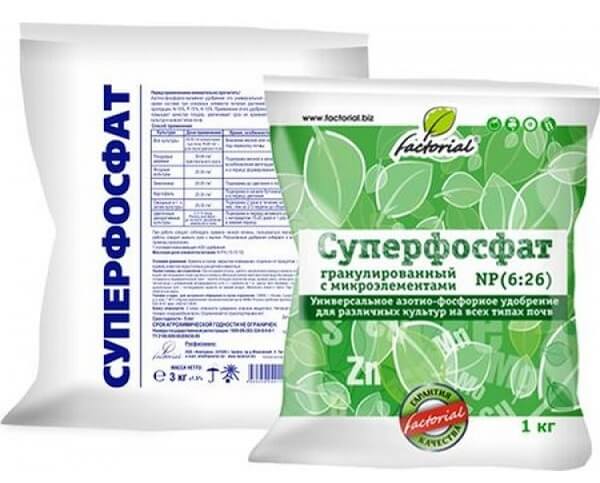
Since superphosphate is poorly soluble in water, it is introduced by embedding it into the soil or preparing an extract from it. To prepare the hood, take 3 tsp. double superphosphate and pour 0.5 l of boiling water, the solution is stirred and left for 6-8 hours. Then the upper liquid part is drained from the can, and half of the drained extract is diluted in a bucket of water and fertilized, as with other fertilizers.
Observe the dosage strictly. When you increase it, you can learn the opposite effect, the plant will simply dry out.
How to feed peonies in spring for flowering - scheme
Starting from the age of three, the peony bush is ready to please the owners with lush flowering. By this age, the bush has at least 12 strong stems. Proper feeding can help the plant to reveal its full potential already in the first flowering.
Below we will describe the step-by-step feeding of peonies in spring and summer:
Term
How to conduct
As soon as the snow melts from the flower bed and reddish "noses" of peonies appear on the surface of the soil
The soil is sprinkled with dry fertilizers. For one bush you will need to take: 10 g of urea powder (or the same amount of ammonium nitrate),
15 g of potassium sulfate.
Fertilizers are embedded in moist soil by shallow loosening.
Instead of a mineral mixture, you can use humus (manure that has lain in a heap for at least 3 years) or vermicompost. About half a bucket of the product is scattered around the bush.
During the period of filling the buds
The plant needs potassium and phosphorus. Superphosphate is suitable, in an amount of 20 g, mixed with 15 g of potassium sulfate
The preparations are scattered under the bushes and loosening is embedded in the soil.
Important! Top dressing is applied only to wet soil, after watering.
Just before flowering
It is useful to sprinkle plants with a flowering stimulant "Bud". Dissolve 1 g of powder in a liter of pure water.
2-3 weeks after flowering
Repeat the phosphorus-potassium dressing
This composition promotes good root growth and strengthens the plant, preparing it for the coming winter.
Peony bushes at the age of 8 years and older need to increase the dose of nutrients.
In spring, instead of humus, you can use a more concentrated solution of fresh manure or poultry manure.
- mullein is bred in water at a concentration of 1 to 7,
- chicken droppings 1 in 12.
A bucket of the resulting solution is poured into a groove dug out in advance, 12 cm deep. It is laid around the bush, stepping back from the center of the peony at least 50 cm. After adding the solution, sprinkle the groove with grass.
How to feed peonies - folk remedies
Experienced flower growers have long preferred to fertilize peonies in a folk way. They are very popular with:
- yeast feeding;
- feeding with bread;
- top dressing with the addition of ash;
- introduction of chicken droppings.
All these fertilizers are used by gardeners in order to obtain lush, abundant flowering and strong plants with good immunity as a result. If you feed the peonies in an insufficient volume, there are high risks that the plants will get sick, wither and their flowering is unlikely to please the owner.
How to feed peonies with ash?
Ash as fertilizer for peonies is applied immediately, as soon as the remnants of the snow cover have melted. At this time, the sprouts have not yet emerged from the soil, and the ash can already be scattered. This will make the plants stronger and the color tones richer. An infusion can be made from wood ash in the following proportion: take 1 liter of ash, dilute it in 10 liters of water, insist for a week and water the peony bushes with a solution.
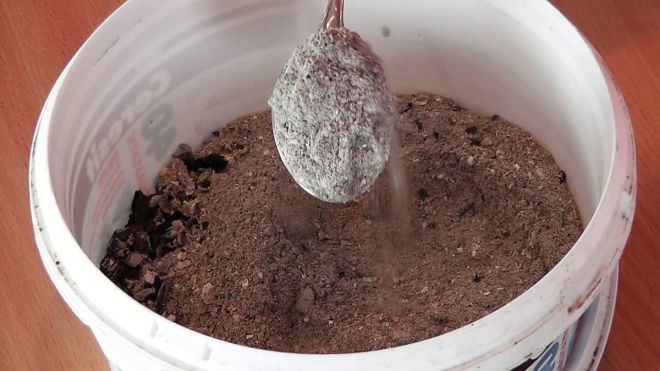
Can peonies be fed with urea?
Peony urea is an excellent fertilizer. This feeding is done when the snow has not yet completely melted. It is permissible to simply scatter the granules where the peony bushes are planted. Urea saturates the flowers with nitrogen and as soon as the snow begins to melt, nutrients will begin to flow to the roots of the plant.
In spring, peonies can be fed with urea by spraying: for this, 5 g of urea is added to 1 liter of water. Spraying can be repeated after 30 days if the need arises. It is not necessary to combine feeding with ash and urea with each other. Peony shoots will appear too early and frost can damage them.
Can peonies be fed with manure?
Manure as fertilizer for peonies is an organic top dressing. To make it, you can take bird droppings or mullein. In the case of a mullein, 1 bucket of mullein (and fresh) is taken on a barrel of water. This volume is diluted into 5 buckets of water. Chicken droppings are diluted in 25 buckets of water. All this is left in the sun and allowed to wander for about 10 days.
When the fermentation process is over, 200 - 300 g of superphosphate, 500 g of wood ash are added to the composition. Before feeding, the mullein composition is diluted into 2 parts of water, bird droppings into 3 parts. The preparation of such a fertilizer does not take a lot of energy, and the effect from it is truly amazing.
Can peonies be fed with yeast?
How else to feed peonies? A good option is to fertilize peonies with yeast. Yeast infusion is a kind of analogue of mineral fertilizers.They have a lot of nutrients, and it is better to carry out such feeding as soon as the first shoots appear. It takes an average of 2 hours to prepare the top dressing, the recipe is as follows:
- To fertilize 1 bush of peonies, you will need 100 g of dry yeast and 10 liters of plain water.
- You need to dilute the yeast in warm water.
- You can add 0.5 cups of wood ash.
To enhance the effect, you can water the peony bushes with the prepared composition from a watering can. First, watered with plain water, then top dressing, then again with a bucket of clean water. In this case, the fertilizer will reach the roots as quickly as possible, which lie deeply and the nutrients will immediately begin their work.
How to feed peonies with bread?
Fertilization of peonies with bread is carried out according to a simple recipe:
- You need to take 500 g of dried brown bread.
- The pieces are soaked in a bucket of warm water.
- Add 1/4 cup granulated sugar.
- Everyone insists in a warm place for 12 hours.
- The bread is squeezed out, the solution is filtered. The resulting amount is enough to feed 1 bush.
Tips for beginner gardeners from experienced farmers

Top dressing of peonies in the spring is carried out in several passes. The first stage occurs in April or May, when sprouts rise above the earth's surface. A complex of organics and minerals is required. Rotted horse or cow manure works well in tandem with nitrophos. The composition is scattered over the site, after which the soil is dug up 8-10 cm deep.
After 2-3 weeks, the second feeding is carried out in the spring: the peonies are fertilized with the nutrients necessary for lush flowering. A composition is prepared from a bucket of mullein solution with the addition of 40 g of phosphorus and 20 g of potash fertilizers. Each bush will need 2-3 liters of solution.
The third treatment is carried out a couple of weeks after flowering ends. Apply a liquid mullein solution with the addition of 15 g of potassium sulfate and 30 g of superphosphate per bucket.
For young bushes, foliar treatment with a solution of complex mineral fertilizer every month will be useful.
Experienced gardeners give the following recommendations:
apply any additives and fertilizers in the evening or in cool cloudy weather. The sun's rays accelerate the evaporation of drugs, they can burn delicate stems and leaves moistened with a solution;
carrying out foliar processing will be more effective if you add a little washing powder or crushed laundry soap (1 tbsp. l. per 10 l of solution) to the finished solution. This method will retain beneficial substances on the foliage, not allowing them to drain quickly;
regardless of whether mineral additives or humus are used, when scattering under the bush, you need to leave a distance to the stems and avoid getting chemicals on the leaves - contact causes a thermal burn, which worsens the condition of the plants;
flower care begins in late April or early May (depending on the climatic zone and weather conditions)
The following activities are carried out at intervals of 2-3 weeks, organizing the feeding of plants at each important stage - germination, bud formation, end of flowering;
before introducing the root compositions, the soil is well moistened so that the nutrients quickly penetrate deep into the soil, to the roots.
What peonies love and what not to use
Below you will find information on what peonies love, what to feed.
| Variety | Examples of |
| Nitrogen |
As nitrogen fertilizers in early spring, solutions of urea or ammonium nitrate are applied under the flowers. Of organic fertilizers, horse manure is suitable for the peony (it does not burn the roots and can be used as mulch), mullein and chicken droppings. |
| Mineral | For peony, ready-made mixtures of mineral fertilizers are used. The following drugs are widely known among gardeners:
The composition of these mixtures, in addition to the main elements, also includes microadditives that affect the splendor of flowering. |
Do not use:
- pig manure, due to its causticity;
- substances that acidify the soil (peat, coniferous litter, ammonium chloride).
Biohumus
Separately, it should be said about vermicompost, a product of organic processing by red dung worms. It is an environmentally friendly and natural substance that significantly strengthens the plant's immunity.
- Fertilizer in dry form is applied directly under each peony bush in spring and autumn.
- The liquid extract from vermicompost is used for foliar feeding of flowering peony, diluting 15 ml of the drug in 1 liter of water.
Fertilizing a peony with bread
A cheap and effective fertilizer for perennials, providing vigorous stem growth and lush flowering.
For the preparation of fertilizer, pieces of bread are suitable - white, rye, yeast sweet pastries, crackers. About a kilogram of the product is laid out in a bucket and poured with hot water (about 50 degrees). Covering the container with a lid, it is left overnight or for a day.
Plants are watered with a filtered solution twice a season: in spring, when the green mass is actively growing and before the peony blooms. About 5 liters of funds are spent on an adult peony bush.
Folk remedies for feeding peonies
Wood ash is an excellent source of potassium. It stimulates metabolic processes in the plant and promotes the growth of vegetative mass. Bushes grow after such feeding strong with elastic stems. The use of ash makes the inflorescences with more saturated shades.
Fertilizers such as potassium magnesium, potassium chloride, potassium sulfate, and potassium humate also contain a lot of potassium.
Ash can be sprinkled on melting snow near bushes or an ash hood can be made. To extract 1 cup of sifted ash, stir in 5 liters of water and leave to infuse for 5-7 days. And then pour the strained solution over the soil in the root circle.
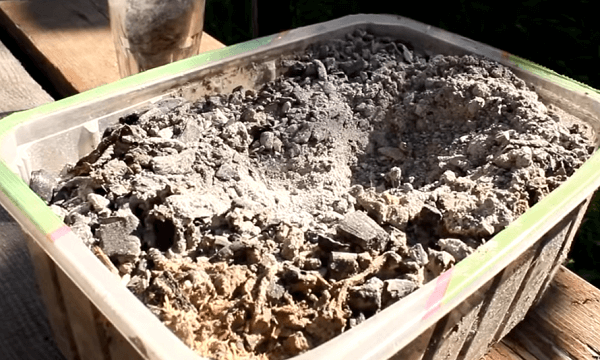
Boric acid can help avoid oxygen starvation, especially in dry weather. The dissolved powder improves metabolism, promotes the production of chlorophyll, and helps the roots breathe. Top dressing is carried out before flowering. Dissolve 5 g of powder in 1 liter of hot water, stir, and then bring the volume of water to 10 liters and spray the plants. Consumption of 1 liter per 10 sq. m.
Boric acid will also help to deal with garden ants. To do this, mix boric acid powder with egg yolks and spread under the bushes.
Eggshell. The shell contains a lot of calcium salts, phosphorus, sulfur, etc. (a total of 27 microelements). Fertilizer stimulates the opening of ovaries well. You can feed peonies throughout the growing season. To feed 10 egg shells, pour 1 liter of warm water and leave for 2 weeks. By the end of the second week, an unpleasant smell of hydrogen sulfide will appear from the infusion, which means the infusion is ready. For use, the infusion is diluted in 10 liters of water and watered near the bushes.
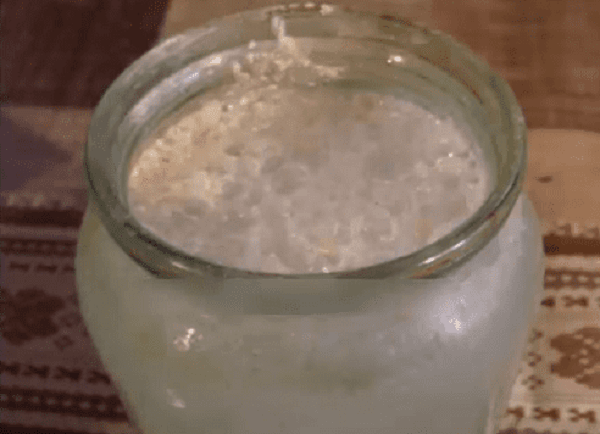
For regular watering, make calcium water. In a bucket of warm water, throw the shells of 20 eggs, leave for 3-4 days, and then water the plants with the resulting infusion.
Ammonia. It is used as a nitrogen supplement, as well as for pest control. In horticulture and horticulture, a 10% ammonia solution is used. This improves the growth of green mass and provokes intense flowering. It is used as a top dressing in early spring to improve growth. A bottle with a capacity of 25 ml of a 10% solution is diluted in 10 liters of water, and then water the ground near the bush.
Be careful when handling ammonia. It is best to work with it outdoors and away from open sources of fire.
How to feed peonies in the summer during the budding period
During the period when buds begin to set, peonies especially need additional nutrition. Indeed, for setting a large number of ovaries and lush flowering, the plant really needs potassium and phosphorus. Of course, nitrogen is also needed, but in a smaller amount.
In order for the plant to better absorb mineral fertilizers, it is also good to spill the plant with an infusion of any organic fertilizer. It could be
- chicken droppings,
- infusion of mullein,
- herbal infusion, etc.
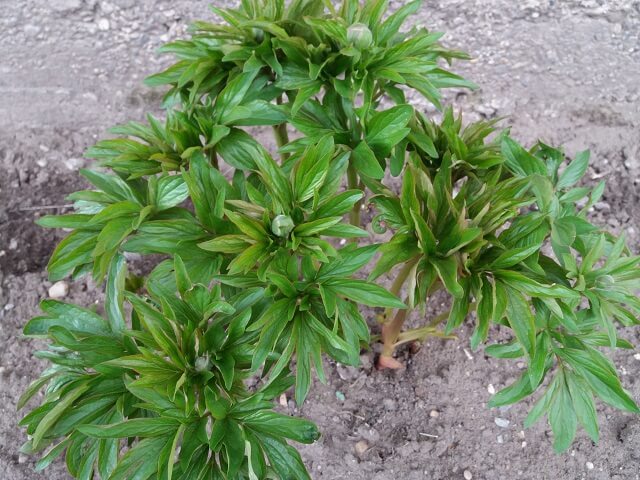
Complex mineral fertilizers
For this purpose, complex mineral fertilizers are used, for example, nitroamofosku. It contains nitrogen, phosphorus and potassium in equal amounts. It is better to dissolve nitroamofosku first in a small amount of hot water. For 1 liter of water, add 1 tbsp. l. nitroamofoski, stir so that it dissolves well. After that, the solution is poured into a watering can (10 liters). Plants are watered in cloudy weather. And before adding nitroamofosku, loosen the soil near the bush and make a groove at a distance of 30 cm from the bush.
Then water the perennial abundantly, pouring 3-4 buckets of water into the groove in several steps. After the water is absorbed into the soil, pour the nitroamofoska solution into the groove from the watering can. Once the liquid is completely absorbed, cover the groove with earth.
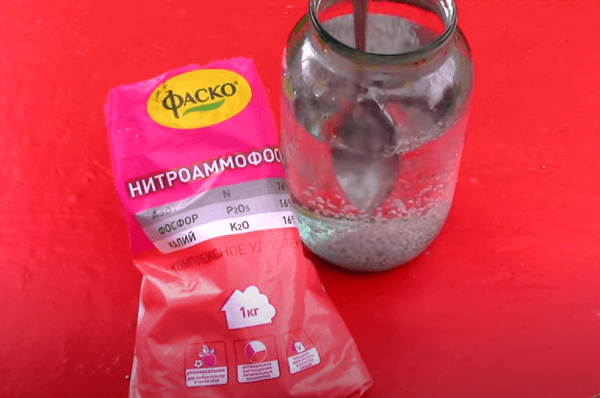
Complex fertilizer can be "collected" by yourself. To do this, mix 10 g of urea, 20 g of superphosphate and 20 g of potassium salt. Mix and embed the granules in well-spilled soil to a depth of 10-15 cm, 2-3 tbsp each. l. per plant. Although you can use ready-made complex formulations - Fertika, Kemira Universal or Spring from Fasco, etc.
Chicken droppings
It can be used either from a personal subsidiary farm, or you can buy it granular at gardening stores. When applied, the result is noticeable after a few days. Perennials begin to grow faster, abundant formation of ovaries is observed. And in the future there will be a lush bloom. Moreover, the fertilizer applied has its nutritional effect within three years.
To prepare the mother liquor, the container is 2/3 filled with chicken droppings and filled with warm water. Leave to infuse for 5 days. Then the infusion is ready for use. To prepare a working mother liquor, dilute in a proportion of 0.5 liters per 10 liters of water.
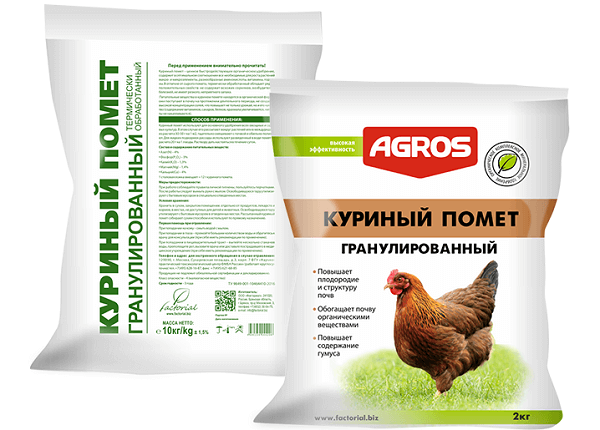
If you use dry granulated chicken manure, then as a dry top dressing, it is simply scattered around the bush into grooves at the rate of 150 g per 1 sq. m, and then embedded in the soil. Make sure that the granules do not come into contact with the peony roots, as they are very concentrated. Therefore, it is better to use liquid top dressing.
To prepare a liquid fertilizer, 1 kg of granules is poured into 3 liters of water, left to swell for a day. A day later, the resulting solution is diluted in 20 liters of water and poured into the grooves near the bush, 0.5-1 liters, depending on the age of the perennial.
Mullein infusion
Mullein is a liquid manure from cattle without litter elements, the most popular and universal fertilizer among gardeners and gardeners, and it is environmentally friendly. Its advantage is that in its composition it contains all the necessary macro- and microelements, which sometimes do not exist in others.
For feeding, uterine infusion is also made first. To do this, the container is half filled with manure, and then the container is topped up with water. Stir and let it brew for several hours. For feeding, the mother liquor is diluted in a ratio of 1:10.
Herbal infusion
Free, unique fertilizer that can literally be prepared from what grows underfoot. This is an excellent nitrogen supplement, it helps to build up green mass and strengthens the plant. Potassium and phosphorus contained in the infusion are necessary for the normal development of the root system, bud setting and friendly flowering. The infusion can be prepared from cut grass and weeds. And it prepares very simply.
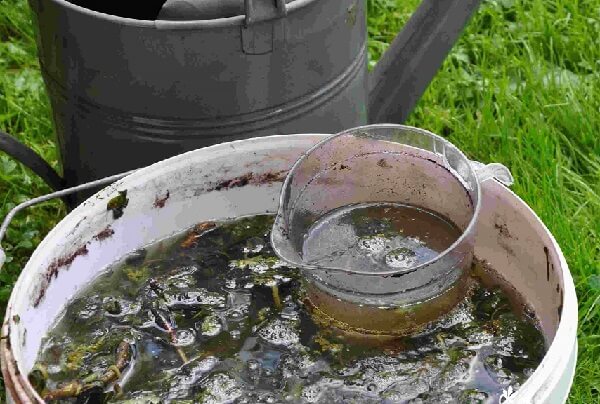
Fill the container 2/3 of its volume with grass, fill it to the top with water, stir. If desired, wood ash, superphosphate or cow cake can be added to the infusion. Leave to infuse for 5-7 days. For feeding, a working solution is made in a ratio of 1:10. The infusion is introduced, as usual, into the previously shed soil into the groove near the bush.
Baikal
Peonies love such "snacks" as mulch with the addition of "Baikal" fertilizer.This increases the fertility of the soil and has a positive effect on the intensity of flowering and the brightness of colors. Mix the compost for mulching with Baikal and spread the mulch under the bushes 10 cm thick.
Optimal timing
Florists adhere to the following rules for fertilizing flowers:
- spring feeding is needed for flowering;
- the second feeding takes place in the summer;
- the third - in the fall after the flowering of the culture.

The first stage of feeding (spring) is introduced during the period when the snow has melted and the above-ground part of the plant is visible. This usually occurs at the beginning of spring. Fertilizers are mainly nitrogen-containing (using urea, ammonium nitrate) with a small addition of phosphorus and potassium.
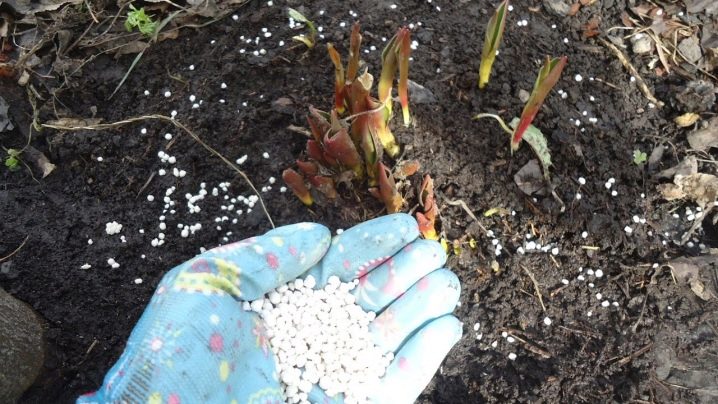
Most often, flower growers skip the spring period and begin to feed the plants either during the second fertilization period, or once a year, using complex mineral fertilizers with the addition of humates.
The second stage of feeding is carried out before the budding of the bush in early summer. During this period, the nutrient fluid is enriched with macronutrients, where the proportion of phosphorus and potassium exceeds the amount of nitrogen. You can use ready-made flower fertilizers, for example, nitroammophos or other preparations.
During the flowering period of peonies, feeding is not performed.
The third feeding, the last one, takes place in the fall season, two weeks after the last bud has fallen off. The main task of the last stage is to restore the strength of the plants before the winter season and the laying of flower ovaries for the next year. Superphosphate fertilizers with potassium content are used.
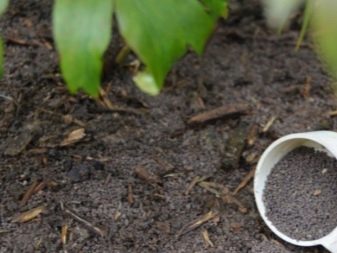
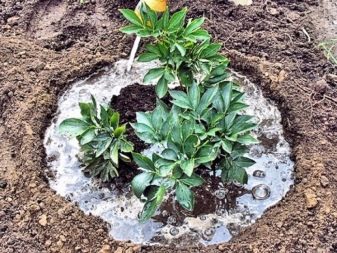
Features of the soil, watering and mulching
There are several varieties of this amazing plant, with lush, vibrant flowers:
- Tree peony.
- Kustovoy.
- Grassy.
All of them delight those around them with the beauty of the buds that open at the beginning, with a huge variety of colors and shades. The peculiarity of the peony is that it continues to delight the eye and complement the created garden design even after the flowering period has passed.
The point is that this flower:
- Dislikes shaded areas.
- Drafts and strong winds.
- Direct sunlight.
- Neighborhood of some garden plants.
When choosing a place for planting peonies, you need to take into account that the bushes need a sufficiently large free space, clean, fresh air, warm and moderate soil moisture. Those breeders who grow flowers not in a greenhouse, but in a garden, care for young peonies in strict accordance with existing rules. This is due to the fact that the first year after planting in open ground is very important for a young plant. If everything is done correctly, the plant will not just take over and begin to actively bush. Peonies can delight their owners with long flowering, staying in one place and growing rapidly for several decades.
Despite the fact that peonies cannot be called moisture-loving plants, the bushes should be watered regularly. It is not necessary to flood the site, it is enough to constantly moisten and loosen the soil around the bushes, both during and after flowering. Another important detail is the cleaning of the fallen petals.
High-quality care of peonies in spring and during flowering requires regular performance of certain actions:
- Weeding or removing weeds by hand or with the help of special tools is carried out at least once every 5-7 days. Weeds growing around the bush of peonies have a detrimental effect on the plant itself and spoil its appearance. The weed grass seems to prevent the peonies from growing, depriving them of their strength. Getting rid of it, the gardener frees the bushes from an unbearable load, loosens the soil around the bushes. Providing full access to the roots of oxygen, it prevents the development of the decay process due to stagnation of irrigation or rainwater.
- Peonies need to be watered at least once every 2-3 days, pouring at least 30-35 liters of water under an adult bush. The ground under the stems of the bush should always be slightly damp.If in the hot season the soil under the bushes dries up. Despite regular watering, the work schedule will have to be changed and flowering plants need to be watered daily. They do this in the evenings, when the air temperature drops noticeably and there is no longer bright sunlight.
- 10-12 hours after watering (in the morning after evening watering), you can start loosening the soil. Not all gardeners use mulch. Most of them prefer quality loosening with a garden tool. This procedure allows you to provide air access to the roots of the plant, saturate the soil with oxygen and avoid root rot due to the accumulation of moisture in the ground under the bushes.
- Top dressing and fertilizers are used without fail, despite the seemingly healthy appearance of the peony. Adding 1/3 tsp to a bucket with 10 liters of water. (3-4 g) potassium permanganate, you can not only strengthen the plant, but also disinfect the soil.
- Getting rid of fallen leaves and petals of dried flowers that lie on the ground at the base of the bush, the gardener prevents pathogens from appearing on the stems and leaves of the peony. Faded flowers must be cut off immediately, removing only the flower head. Part of the stem remains intact, and part is removed by cutting off the dried flowers.
Peonies grow quickly and the bushes grow quite large. The flower heads are distinguished by a large number of petals and significant weight. This becomes the reason that the flower growers are trying to provide the flowers with high-quality support, tying the stems to pegs specially driven into the ground or surrounding the bush with a small but rather strong fence.
Lily feeding scheme
Feeding lilies is carried out in 4 stages. These flowering plants are fertilized with liquid and dry organic, mineral and complex fertilizers. At the same time, root and foliar dressings are alternated. Many flower growers also resort to folk remedies.
The first
For the first time in the season, it is recommended to feed the lilies in early spring, after the snow cover has melted. But the procedure should be carried out only when the soil warms up to + 6 ° C, since if the earth is cold, the nutrients will not be absorbed. As a fertilizer, ammonium nitrate should be used at the rate of 1 tbsp. l. per 1 m2. This dry dressing should be distributed at the base of the stems. You can replace nitrate with urea, which is a more gentle fertilizer and does not affect the acidity of the soil. Additionally, during the first feeding, it is recommended to add a solution of wood ash (250 g per bucket of water).
It is desirable to feed the lilies in early spring with organic matter, having previously prepared the infusion. Step-by-step instructions for making fertilizer:
- Mix manure with settled water in a ratio of 1: 4.
- Let the mixture brew for 12 days. It is recommended to stir the solution periodically.
- Dilute the finished infusion with water in a ratio of 1:10.

In early spring, you can fertilize lilies with Ideal's solution
During the first feeding, you can also resort to the use of a complex universal fertilizer. It is recommended to use the drug Ideal, a tablespoon of which should be diluted in a 10-liter bucket filled with settled water at room temperature. For each 1 m2, it is recommended to use at least 2 liters of the resulting solution.
The second
The second feeding is carried out during the budding period, namely in late May or early June. The procedure will help to achieve the appearance of large and bright flowers. Mineral fertilizers containing nitrogen and phosphorus - this is how to feed lilies before flowering in June, because during budding flowers most of all need such substances. Perennials need to be fed with Azophos and nitroammophos (1, 5 tablespoons per bucket of water). Lilies can also be fertilized with ammonia. Folk remedy for foliar feeding is prepared from 1 tsp. ammonia diluted in 3 liters of water. The resulting solution should be sprayed on the flowers after sunset.
Third
Lilies bloom in the middle of summer and at this time a third procedure will be required, which will help prolong flowering. Plants during this period need to continue to be fed with nitroammophos. You can also fertilize them with potassium humate. The solution is prepared from 50 ml of liquid fertilizer and 10 liters of water. For foliar feeding, such a complex preparation as Stimulus is suitable. A solution based on it for spraying plants is prepared according to the instructions. During the flowering period, lilies respond well to feeding with wood ash. For 1 sq. m it is recommended to scatter 250 g of fertilizer and seal it with a hoe.
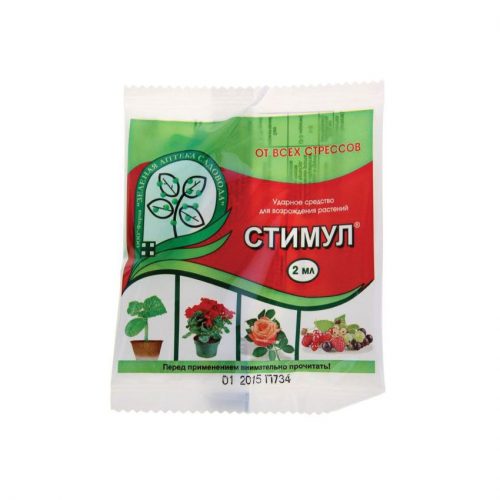
During the third feeding, it is recommended to spray the lilies with Stimulus solution
Fourth
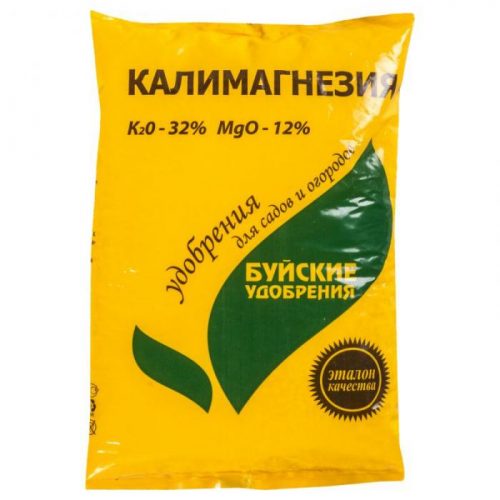
During the fourth feeding, potassium magnesium should be used.
The next feeding is carried out at the end of summer, after the lilies have faded. The procedure is necessary in order to achieve abundant flowering next year. At this time, it is recommended to feed the lilies with phosphorus-potassium fertilizers. Potassium magnesium is suitable, 1.5 tbsp. l. which should be diluted in a bucket of water. The resulting solution should be watered at the rate of 10 liters per 1 m2. If desired, potassium magnesium can be replaced with superphosphate, which should be dissolved in hot water.
Fertilizers for peonies do it yourself
These luxurious flowers will be very grateful for organic feeding, which you can do on your own.
To prepare such a product, you need either mullein or bird droppings.
Fresh cow manure for a large barrel of water is needed about a bucket, which we dilute in five buckets of water. Bird droppings should be bred into 25 buckets. We put it in the sun and let it wander for up to half a month (at least 10 days).

After a couple of weeks, when everything has fermented, add superphosphate (from 200 g to 300) and half a kilogram of wood ash.
Before feeding, dilute the manure solution with two parts of water, with bird droppings - in three parts.
Why don't peonies bloom, do you need feeding?
Peonies do not bloom, not only because they lack nutrients and vitamins. This can happen for many other reasons.
Firstly, flower growers often pay attention to the fact that inept novice gardeners deeply deepen the bush into the planting pits. In this case, you should not feed the plant, as this will not bring the desired result.
We recommend digging the rhizome from the soil, examining it for damage from underground rodents and properly preparing the seat.
These luxurious flowers are long-livers and can “live” on one bed for about 10 years. When they reach this age, then you need to transplant the plant, dividing its rhizome into several parts. This procedure will allow you to get new flowering bushes in your garden. For transplanting a plant, the planting pits are also fertilized and prepared, as in planting.

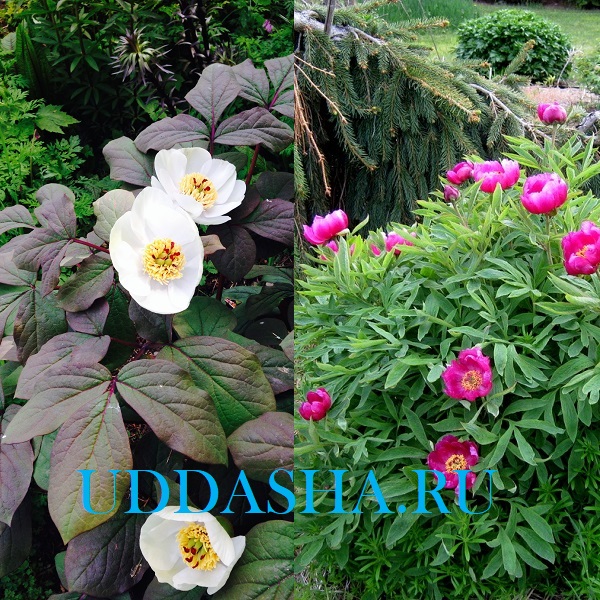
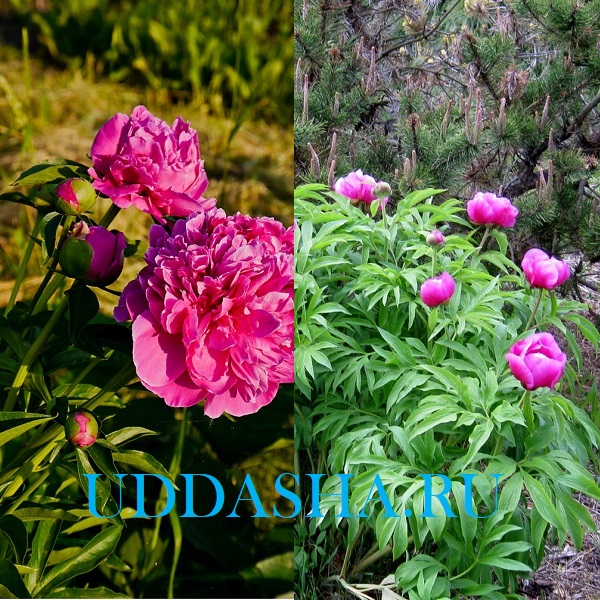
Peonies are very sensitive to soil composition. If it does not suit them, then the plant simply does not bloom and becomes boring and unattractive. Choose a well-lit place for planting peonies, they love sunlight. The bush is protected from cold winds with special screens or a plant is planted near buildings. But, before the construction, there must be at least 2 meters of space. The fact is that peonies do not tolerate excessively wet soils, and in spring and autumn, and especially in rainy weather, raindrops fall from the roof of the buildings. Also, do not plant peonies next to large plants that can shade the shrub and use a lot of nutrients from the soil.

Thus, the answer to the question of whether additional feeding is needed can be formed as follows. It is not always appropriate, but in most cases it is desirable. In this case, the problems can be completely different.
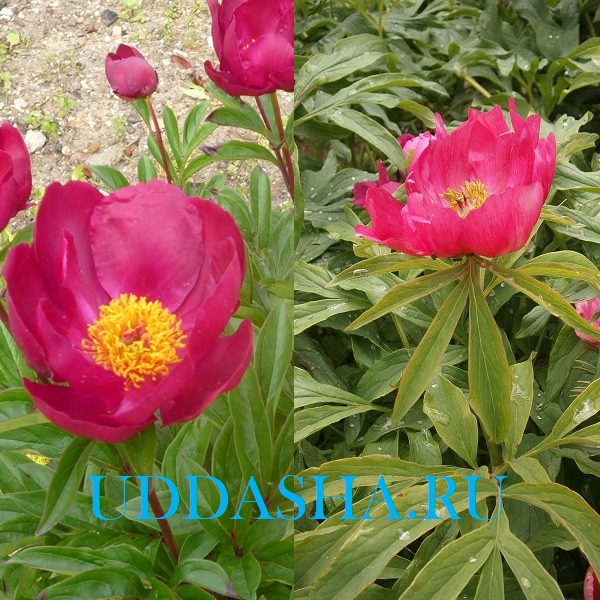

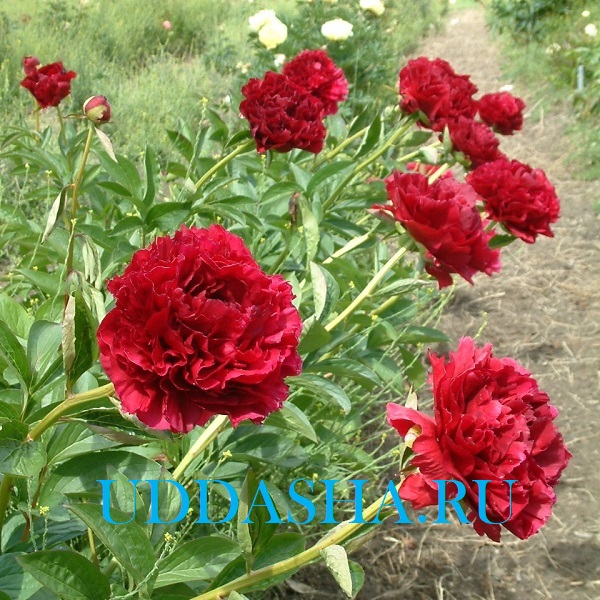
How to feed peonies with bone meal
Prepared bone meal can be purchased at gardening stores. Bone meal decomposes gradually in the soil and its action is from 6 months to 3 years. Therefore, it is advisable to apply it to the soil in the fall.But by spring, the root system will strengthen faster, the plant will get stronger faster, more shoots with buds will appear, and flowering will improve.
Such a positive effect on the plant has a high content of phosphorus (29-34%) and calcium (up to 45%). Even a small amount of nitrogen (only 1%) and a wide range of trace elements contribute to the rapid growth and vigorous blooming of buds. But there is no potassium, so when feeding, wood ash should be added to the soil.

Bone meal is introduced in the form of a powder for digging in the fall or loosening in the spring. It is enough to sprinkle the powder into the root circle, 2-3 handfuls per plant, followed by incorporation into the soil. Or make a fume hood. To do this, 50 g of powder is diluted in 1 liter of hot ox, mixed and left to infuse for several hours. Stir occasionally. The finished infusion is then diluted with 20 liters of water and watered over the plants.
Phosphate rock has a similar prolonged effect. It, like bone meal, is introduced into the soil in combination with nitrogen and potassium fertilizers.


